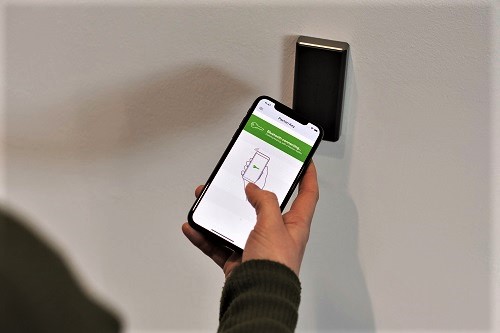
3.13.23 – SSI – Steve Rowlands
Wireless access, smart credentials, wireless door handles, remote management and other features to consider.
Let’s take a detailed look at the market’s current trends and most sought-after features when it comes to access control.
Wireless Access — The adoption of wireless technologies such as Bluetooth, Z-Wave and Zigbee in conjunction with smartphones and smartwatches are creating opportunities for new innovations. With those trends, the security industry like many others is being upended. These smart technologies continue to grow in recent years, allowing manufacturers to push the boundaries of what is achievable when it comes to access control and building automation. With wireless technologies integrating with access control products, it enables for wireless solutions such as smart credentials and wireless locksets to operate in a more reliable, user-friendly, and intuitive way.
Smart Credentials — These are ever more widely accepted across all markets as the technology becomes more robust. Mobile phone credentials can replace traditional cards and key fobs, so users won’t have to carry around additional equipment to navigate their premises. They are efficient and cost-effective as facility managers can issue the credentials to users at the touch of a button. Smart credentials are particularly useful when there is a need for frequent temporary access. One familiar example is Airbnb, where smartphone credentials offer great flexibility to access rental properties.
Intercom Door Entry — With video door entry systems, site managers can verify a visitor or an employee’s identity before granting access. Intercom door entry can be further enhanced with a door entry app, and again, this is related to wireless technology. There are usually two ways to answer a call for entry request. Users either go to the actual monitor to answer or they can use a third-party application for the remote answer function. However, not all third-party apps are reliable or will integrate smoothly with any door entry monitors.
Wireless Door Handles — The smart wireless door handle is another great example of access control technology evolvement. Door handles can be connected to an access control system, maximizing the functionality and efficiency of them. For example, PaxLock Pro wireless, electronic battery-powered door handles can be used as a standalone security device or with Paxton’s Net2 and Paxton10 access control systems. The energy-efficient unit enters a sleep mode when not in use, and built-in capacitive sensors wake it when operation is required and a user’s token is presented.
Remote Management — This is no longer an afterthought when designing systems but has become a more commonly discussed requirement. More access control systems are utilizing browser interfaces with less hardware onsite so they can be accessed on any device anywhere without the need to install software. The ability to manage a site or multiple sites is not only convenient but can also make more efficient use of personnel administering the system. This can also potentially reduce the need to travel to sites which can save time and money. Features including granting or revoking access, or the ability to lockdown a site at the touch of a button, allowing system administrators to quickly respond in case of an emergency. Also, with more people now working from home, more administration is being carried out remotely. By utilizing free remote access and smart credentials that are mentioned above, users can administer and allow access to users without the need to be onsite with just a browser and an Internet connection.
Access System Integrations — Being able to manage appliances automatically through an access control system can help enhance energy efficiency. The prices of gas and electricity are higher than before. People are looking for ways to lower energy usage and access control systems can be a useful tool. For instance, lights and appliances can be connected to an access control system to ensure that they are not left on when a building is unoccupied. Utilizing features within a system, site managers can set “when the last person leaves” as a trigger, and “turn off the lights” can be set as an action, therefore reducing energy usage of lights left on in error.
Subscription-Based Services — These are an increasingly popular method of providing a product and is becoming widely accepted as the norm going forward, especially for any Cloud-based products. It is another way of adding convenience to a system. Having the choice to opt in or out will allow users to only spend on what they need, maximizing a cost-effective approach.
Steve Rowlands is divisional director of product management at Paxto
